Student Anthropology Practicum Paper
Department of Geography and Anthropology
Kennesaw State University, Kennesaw, Georgia
Abstract
Very few precontact Native American houses have been fully excavated from the Middle Mississippian period (AD 1200-1375), and even fewer excavations used modern archaeological techniques to uncover them. Recent excavations at a small village named the Cummings site, located two miles (3.2 kilometers) northwest of the preeminent center of Etowah in Bartow County, have unearthed a burned wattle-and-daub house. During the excavation 21 ceramic artifacts were exposed on the house floor including 15 sherds, four partial vessels, one pipe bowl, and one jar stopper. This research examines the ceramic assemblage of this house not only for classification purposes but also for analyzing the possible functions the ceramics had. Houses of this period were single family units containing various activities including food preparation, storage, and rituals that utilized ceramics. The ceramic assemblage at Cummings helps paint a picture of what domestic life was like for the occupants of this Middle Mississippian house and, by extension, the village itself. A comparative analysis of the Cummings ceramics to other Middle Mississippian assemblages provides insight on the similarities and differences in the lives of those living in and around Etowah during the Middle Mississippian period.
Key Words
Etowah Valley Archaeological District, Etowah River Valley, Bartow County, Middle Mississippian period, Ceramics
Introduction
The goal of this research is to help fill the gap present in the current archaeological records pertaining to Middle Mississippian period house structures and their artifact assemblages, specifically their ceramics, in North Georgia. Very few houses from the Middle Mississippian period have been excavated in this part of the Southeast and fewer have been excavated using modern archaeological methods that preserve cultural data and artifact stratigraphy. Artifact assemblages from houses are important as they provide a slice in time for what life was like not only for the inhabitants of the house, but for the community they are a part of. For these reasons an analysis of the ceramic assemblage from a recently excavated Middle Mississippian house located at the Cummings site in Carterville, Bartow County, Georgia has been conducted. It focused on identifying the ceramics’ construction and use and compared this data to other Middle Mississippian house ceramics elsewhere in the Etowah River Valley.
Background
For contextual purposes this section will provide background information for the three archaeological sites in this paper and the Middle Mississippian period that these sites date to. The Mississippian period dates from AD 1000-1550 and is broken into three subperiods: Early Mississippian (AD 1000-1200); Middle Mississippian (AD 1200-1375); and Late Mississippian (AD 1375-1550) (King 2003b, 29). This time period is important because it saw “the development of some of the most complex societies that ever existed in North America” (King 2002). During this period community life in the Etowah River Valley of Bartow County was organized into kin-based chiefdoms, with important civic and ceremonial sites containing earthen mounds with clusters of villages in its surroundings (Hally 1996, 91-92). Village life during this time was ranked with people having limited status mobility while a single group of elites inherited high status (Fried 1967, 109). People subsisted mostly on maize supplemented by local fauna and flora which led to the occupation of floodplains along major rivers for optimal agricultural conditions (Lewis et al. 2012, 24). Their homes were built using a single-set post-wall construction which utilized wattle and daub plastered walls built in a square shape with rounded corners. They were often built in pairs, one for the summer months and one for the winter months (Lewis et al. 2012, 486). During the Mississippian period, especially the Wilbanks subperiod (AD 1250-1325), warfare was common as population densities rose and competition for resources increased along with fissioning rival groups of elites that caused instability in various chiefdoms (Blitz and Lorenz 2006, 140-141). Chiefdoms in North Georgia were very unstable and rarely survived any more than 100 years before they collapsed (Hally 1996, 92).
The Cummings site is located on private property and is used as an archaeological field school by Dr. Terry G. Powis of the Department of Geography and Anthropology at Kennesaw State University, Kennesaw. Georgia. This site, located within the Etowah Valley Archaeological District in Bartow County, is situated above Pettit Creek which drains into the Etowah River. The site sits just two miles (3.2 kms) northwest of the Etowah Indian Mounds (Powis et al. 2021) (Figure 1). The Cummings site is stratified, with an early 20th century house partially overlaying the precontact occupation (Powis et al. 2021).
To get a reliable date for the Cummings house a sample of wood charcoal from one of the burned posts (hewn from pine) was sent to the Center for Applied Isotope Studies (CAIS) at the University of Georgia to be radiocarbon dated. It produced a date range of AD 1260-1300 (Farkas 2021). This date puts the house within the Wilbanks Phase of the Middle Mississippian period. This time frame puts the occupation of the Cummings site at the height of Etowah’s socio-political and economic dominance (King 2002). Both ceramic and lithic artifacts were collected from the burned house floor, yet no organic material was present, as acidic soil from pine trees and the moist conditions of the clay soil has led to poor preservation (Terry Powis, personal communication, 2022).
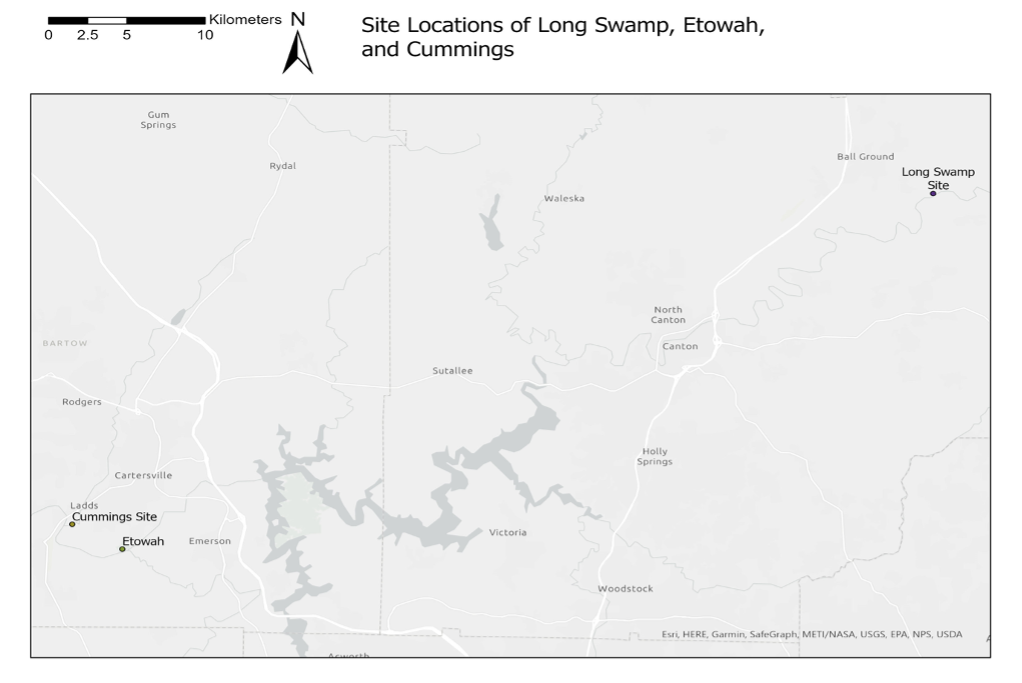
Figure 1. Location of the Cummings site in relation to the Long Swamp and Etowah sites
(Map courtesy of Bryan Moss).
From the house floor both ceramic and lithic artifacts were recovered (Figures 2 and 3). A total of 2,547 lithic artifacts were collected mostly containing debitage flakes created in tool production (Tomko 2022). Fifty-one of these lithics represent diagnostic tools like hammerstones and projectile points (McElrone 2022). Of these 51 artifacts, 14 have a possible art function (James 2022). Other than the lithics, 21 ceramics were recovered from the house floor. Though there is no conclusion on how the house burned down, there are several possibilities. Houses during this time were burned down when the occupants of the house died, when bugs became overly infested in the home, a consequence of warfare, an accident resulting from embers coming from the central hearth, or a lightning strike.
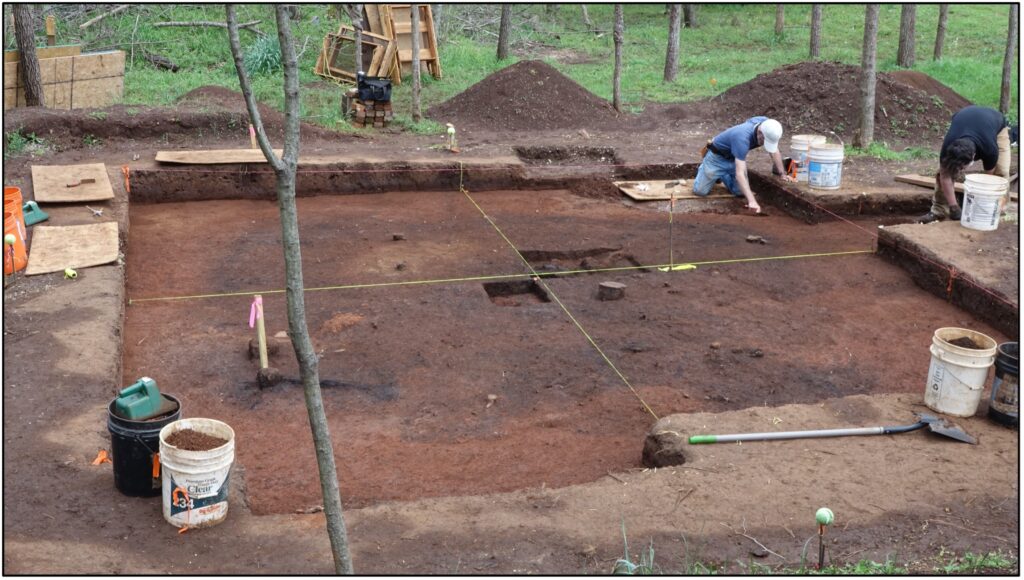
Figure 2. Excavation of burned 13th century house at the Cummings site (Photo courtesy
of Terry G. Powis)

Figure 3. Pottery vessel (V1) on burned floor of 13th century house at the Cummings site.
Image courtesy of Terry G. Powis
Only two other houses from the Middle Mississippian period in the Etowah River Valley have been fully excavated. One of these houses is located at the Etowah Indian Mounds. The Etowah site is one of the most intact mound building sites in the Southeast and contains six earthen mounds, a palisade, a plaza, and village (King 2001b, 1). During the Middle Mississippian period, Etowah was a preeminent village with political, economic, and religious power (King 2003b, 140-141). Given the proximity, the two villages would have had continued interaction and Etowah would have had political control over Cummings (Terry Powis, personal communication, 2022). Despite more than one hundred years of investigation at Etowah, only one house has been fully excavated, which was conducted in the 1950s (King 2001a, 1). This house (labeled Structure 1 at Etowah) is a single-set post house like the house at Cummings and has a similar size of around 5 meters in diameter (King 2001b, 26). Excavations during this time were not like they are today as documentation of the stratigraphy associated with artifacts and the collection of small artifacts like sherds were generally overlooked (King 2003a, 282). General interest and focus were associated with burial features and items such as copper plates (King 2003a, 282). However, recent research has provided relative percentages of the types of ceramics found with the house (King 2001b, 47).
The other excavated Middle Mississippian house in the Etowah River Valley is at the Long Swamp site located in Ball Ground, Georgia and was excavated in 2007 and 2008. This site is a well-known precontact and protohistoric site located on the Etowah River that has been under periodic excavations since the late 1930s (Lewis et al. 2012, i). The site contains an earthen mound, palisade, and village (Lewis et al. 2012, i). Similar to Etowah, people at the Long Swamp Site subsisted mainly on maize supplemented by wild plants and animals (Lewis et al. 2013, ii). The house itself (labeled Structure 3) is larger and dates slightly later (AD 1260-1400) than the Cummings house and contains several midden features not present at Cummings, though the Long Swamp house had burned down similarly to the house at Cummings (Lewis et al. 2012, 271-272). A considerable number of artifacts, both lithic and ceramic, were recovered from the Long Swamp house (6,535 artifacts) and were compiled into a detailed catalog (Lewis et al. 2012, 300).
Methodology
The analysis of the Cummings site ceramic assemblage took place in the Anthropology Lab in the Department of Geography and Anthropology at Kennesaw State University. The ceramics were catalogued and then mends were made to ensure as much vessel completeness as possible prior to attribute, typological, and technological analyses. Identifying whether the ceramic was a rim, neck, shoulder, body, or a base sherd was determined as well as the presence of any appendages (e.g., handle) they possessed were noted. Measurements using a digital caliper were then taken of the length and width of each artifact. This digital caliper was then used to measure the thickness of each, whether that be the rim, body, or base. The rim and lip shape of each sherd/vessel was categorized (Willey and Sabloff 1975). Rim diameter was also determined. Each sherd/vessel was described as having interior or exterior blemishes and where possible its location was identified (Shepard 1956). Using Shepard’s ceramics guide each vessel was also given a luster rating (1956).
An in-depth temper analysis was conducted on each vessel using a stereo microscope. The primary temper as well as any minor inclusions to the clay body were identified. To verify if any of the sherds/vessels had calcium temper muriatic acid, a cheaper and more available hydrochloric acid of less purity, was dropped onto each artifact with a needle nose bottle while being observed through the microscope. If calcium (calcium carbonate) was present it would react with the muriatic acid. Using the W.F. McCollough’s sand-gauge, the primary temper shape and size of each vessel was also identified. A permeability test, as described by Shepard (1956), was an important attribute examined in determining vessel function. The permeability of the ceramic artifacts was determined through observation as half a teaspoon of water was placed onto the interior surface of each artifact and was timed to see how long it took for the water to be completely absorbed. The length of time it took for the water to seep into the body informed on whether a vessel was used to hold liquids in antiquity.
An identifying marker and important attribute for pottery is the ceramic type. The typing or classifying of each artifact was determined using Lloyd Schroder’s (2015) “A Field Guide to Southeastern Indian Pottery,” and the University of Georgia’s (n.d.) “Ceramic Type Collection”. Referencing Schroder’s type list in conjunction with Shepherd’s (1956) guide, the vessel form of each artifact was identified. The last step in the ceramic analysis was to determine the possible function of each vessel. Using Henrickson and McDonald’s (1983) “Ceramic Form and Function: An Ethnographic Search and an Archaeological Application” and Hally’s (1986) “The Identification of Vessel Function: A Case Study from Northwest Georgia” the functions of the ceramic material were determined.
For the purposes of this research each artifact was photographed using a digital camera and scale. For these same reasons photogrammetry was conducted with polycam to create textured three-dimensional models of 15 artifacts, as the remaining six were too small to develop reliable models. Using the photos and analysis of the Cummings site ceramic assemblage a comparative analysis was conducted between the Etowah site house (Structure 1), the Long Swamp site house (Structure 3), and the Cummings site house ceramics (King 2001b; Lewis et al. 2012). As the data from Etowah and Long Swamp is expressed in individual sherds, not vessels, the Cummings site ceramics were accounted for by their original sherd value and not by pieced together vessel numbers when comparing them to the other two sites. As for the Etowah data, King (2001b, 46) had compiled the house ceramics into charts based on a relative sample pulled from the midden present in the house floor and not from the entirety of the house ceramics as this was unavailable.
Results
The Cummings ceramic assemblage consisted of three partial vessels (V2, V3, and V4), six body sherds (V1, V5, V8, V9, V11, and V13), two rim sherds (V17 and V19), two rim/shoulder sherds (V10 and V12), one rim/neck/shoulder sherd (V6), one rim/shoulder/body sherd (V7), three sherds too small to identify (V14, V15, and V18), one pipe bowl (Artifact #5), and one jar stopper (Artifact #40) (Appendix 1). Four of these artifacts possess appendages including two handles (V3 and V6) and two zoomorphic effigies (V2 and V4) (Appendix 1). Most of the pottery rims are everted (flare away from the body) except for one necked rim (V10) and one folded rim (V17) (Appendix 1). All of the vessel lips have a rounded shape (Appendix 1). Eight of the artifacts have blemishes, four of them interior and four of them interior/exterior (Appendix 1). Four of these blemishes can be attributed to cooking (V1, V9, V11, and V12), one during the firing process (V4), and one from burning a substance (possibly tobacco) to smoke (Artifact #5) (Appendix 1; Figures 4-6). The exterior luster of the ceramics are as follows: 14% polished (V2, V16, Artifact #40); 29% burnished (V3, V4, V6, V12, V17, and Artifact #5); and 57% smooth (V1, V5, V7-11, V13, V14, V16, V18, and V19) (Appendix 1). The interior lusters are as follows: 24% polished (V2, V6, V9, V11, and V12); 29% burnished (V4, V4, V8, V10, V16, V18); and 38% smooth (V1, V5, V7, V13, V14, V15, V17, and V19) (Appendix 1).
All of the vessels had a primary temper of grit/sand while the jar stopper and pipe bowl had a primary temper of magnetite (Appendix 1). The minor temper percentages include 23.8% magnetite/mica, 23.8% magnetite, 9.5% quartz, 14.3% mica, and 4.7% magnetite/hematite (Appendix 1). Overall, the ceramics exhibit poor temper sorting as well as an angular temper shape (Appendix 1). Most of the vessels had poor permeability times as 57.9% let water seep through in 0-31 minutes (V6, V7, V10, V11, V12, V13, V14, V15, V17, V18, and V19), 15.8% in 31-90 minutes (V1, V5, and V9), and 21% in 90 minutes to 4 hours (V2, V3, V4, V8, and V16) (Appendix 1). The four vessels that exhibited four hours of impermeability were un-observed from the 4-hour mark to the 9-hour mark by which time all the water had evaporated. Though not true in every case, vessels that had a polished and/or burnished interior and exterior held water for longer periods of time (Appendix 1).
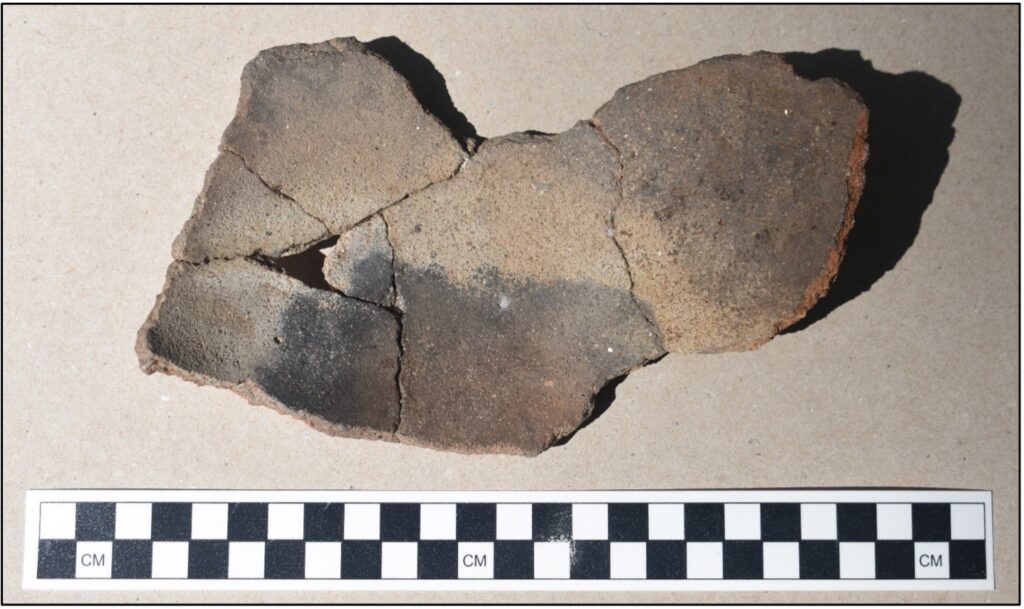
Figure 4. interior cooking blemish (V1). Image courtesy of Terry G. Powis
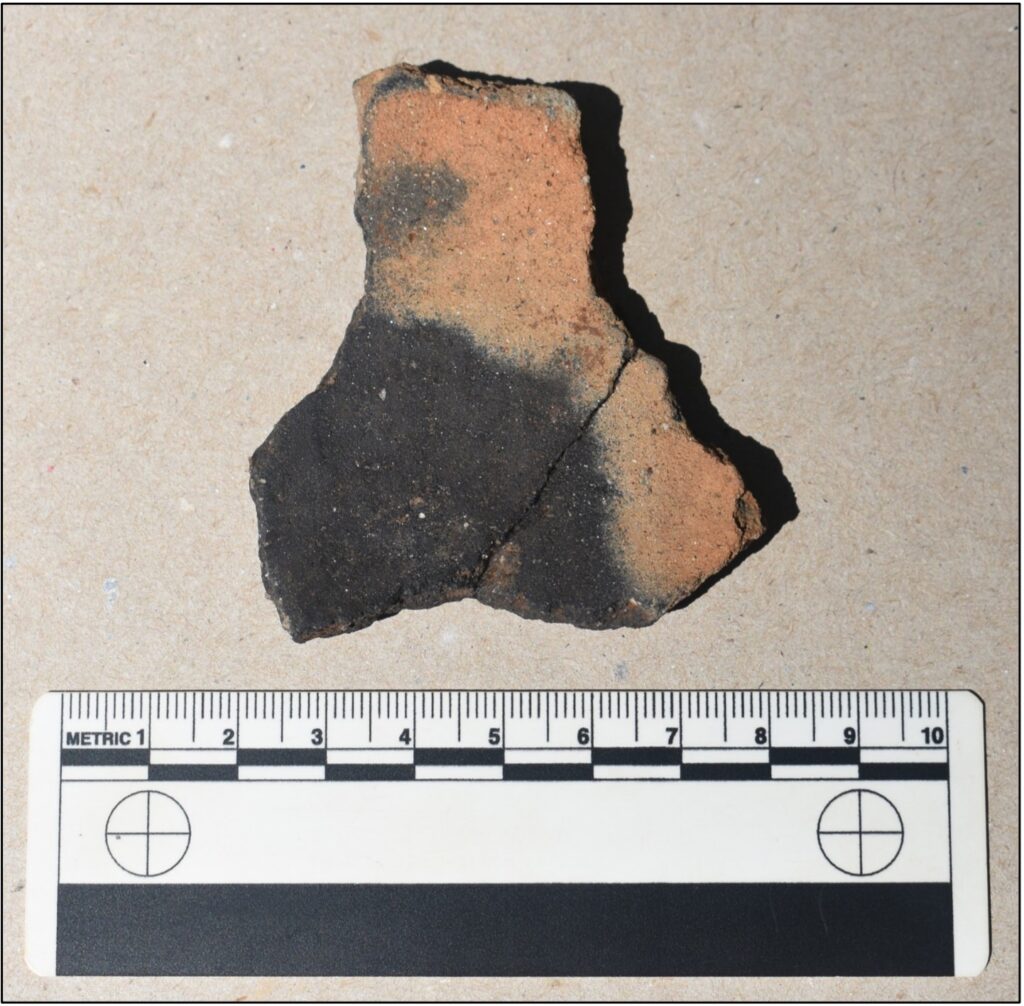
Figure 5. Interior cooking blemish (V11). Image courtesy of Terry G. Powis

Figure 6. Soot blemish (Artifact #5). Image courtesy of Terry G. Powis
The highest percentage of ceramic types found in the Cumming house are Etowah Complicated Stamped at 26.3% (V5, V8, V9, V11, and V19) (Appendix 1; Figure 7). Other ceramic types included 21.1% Wilbanks Complicated Stamped (V1, V10, V13, and V15), 21.1% Etowah Plain (V3, V7, V17, and V18), 10.5% Etowah Burnished Plain (V2 and V12), 10.5% Etowah Plain Smoothed (V4 and V6), and 10.5% Savannah Cord Marked (V14 and V16) (Appendix 1; Figures 8-9). The Cummings house ceramic assemblage consists of six medium/large globular jars (V1, V5, V8, V11, V13, V19), four small globular jars (V3, V6, V10, and V15), five bowls (V2, V4, V7, V12, and V17), one medium/large conoidal jar (V9), three uncategorized sherds as they were too small (V14, V16, and V18) and the pipe bowl and jar stopper (Appendix 1). The possible uses of the artifacts are broken down into five categories: Dry Storage, Liquid Storage, Cooking and Preparation, Serving, and Rituals (Appendix 4). The category that fits with the most artifacts is cooking and preparing food as six vessels fit this role (V1, V3, V7, V9, V11, and V12) (Appendix 4). Three of the six cooking and preparation vessels are also capable of being used in a food serving role (V3, V9 and V12) (Appendix 4). The category with the least amount of the assemblage is liquid storage with only two viable artifacts (V8 and Artifact #40) (Appendix 4). Due to a lack of available attributes and the sherds being too small to accurately contribute to a usage category four artifacts were labeled as unidentified (V14, V15, V16, and V18) (Appendix 4).
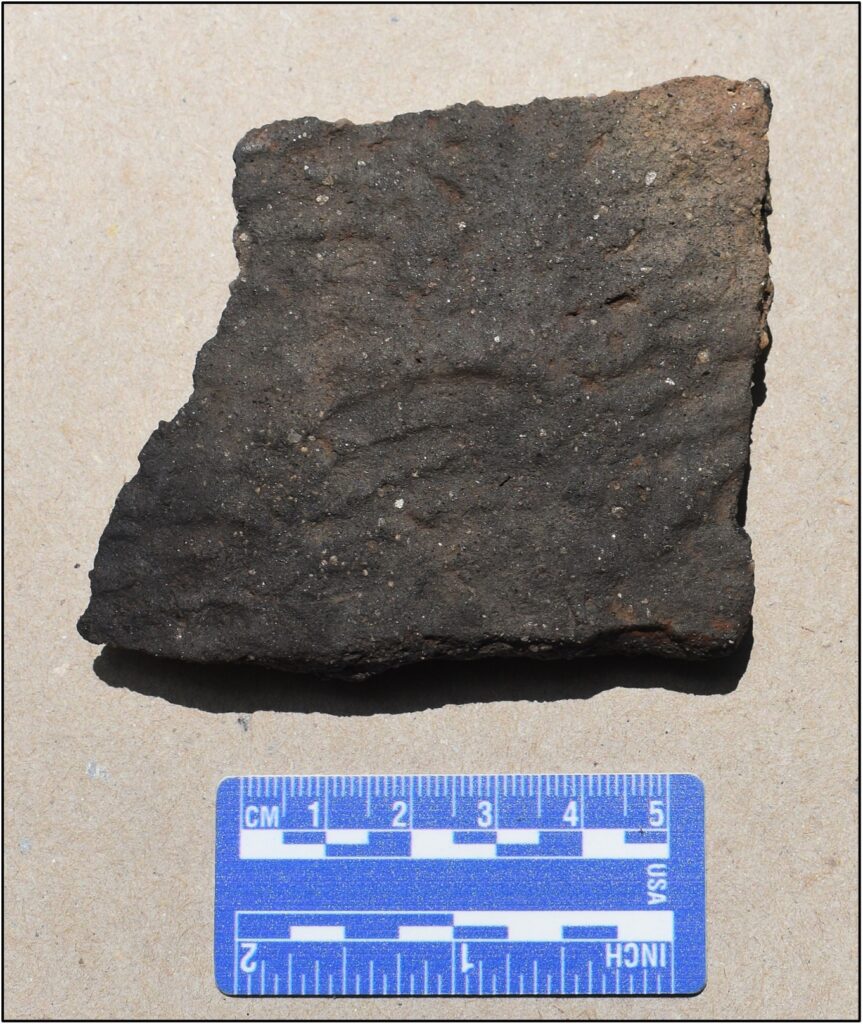
Figure 7. Etowah Complicated Stamped (V9). Image courtesy of Terry G. Powis.
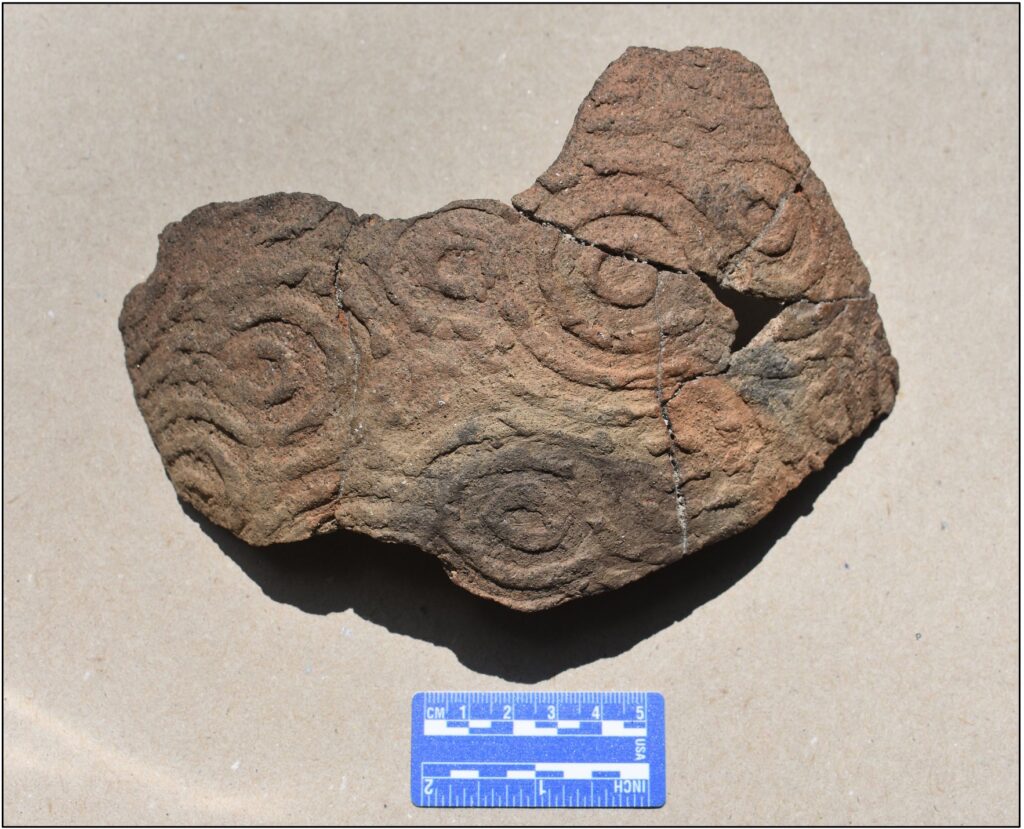
Figure 8. Wilbanks Complicated Stamped (V1). Image courtesy of Terry G. Powis

Figure 9. Etowah Burnished Plain (V2). Image courtesy of Terry G. Powis.
A comparative analysis between the house ceramics at Cummings, Etowah, and Long Swamp focused on type and temper (by sherd count not vessel count). Besides the percentage of Etowah Complicated Stamped sherds from Cummings and Long Swamp there are few similarities between the percentage of identified sherds at these sites (Appendix 2). The majority of both the Etowah and Long Swamp sites’ sherds are unidentified, with almost the same percent of unidentified complicated stamped (Appendix 2). There is also a greater number of ceramic types associated with the Etowah and Long Swamp sites compared to Cummings (Appendix 2). At all three sites grit/sand temper is the overwhelming majority at over 95% though limestone and shell tempers are present at Etowah in quantities under 2% and limestone is under 5% at Long Swamp (Appendix 3). There were no artifacts at the Etowah or Long Swamp site identified as a jar stopper, yet the Long Swamp site did contain some smoking pipes including one made of soapstone, one with a polished and incised surface, and several plain ones like that of the one at Cummings. The plain pipes are made of a similar composition of fine sand tempered clay (Lewis et al. 2012, 420).
Discussion
The forms, types, and tempers all support the Middle Mississippian Wilbanks Phase time period for the Cummings house. It should be stated that the complicated stamped motifs from this time period, such as Etowah Complicated Stamped, have different categorized variations, such as Filfot Cross and Two Bar Circle, and these distinctions are not made with the Cummings site ceramics (King 2001b, 58). This is due to uncertainty with the specific variations present. It should also be stated that though the tempers attributed to the artifacts were prescribed confidently through the use of the stereo microscope and acid test, more certainty and other inclusions could be obtained using a scanning electron microscope.
The results for the uses of the pottery are standard for the period, as ceramics were most often used in food preparation and storage (Hally 1986, 268-272; Henrickson and McDonald 1983, 631-633). This could be attributed to both the benefits ceramics could give for heat transfer, impermeability, and rigid strength as well as the drawbacks the material has such as its heavy weight. As boiling was the most important technique for preparing foods which could take up to 12 hours (e.g., acorns, beans, whole kernel corn), and most foods were served in a soup or stew, vessels that were highly permeable had a restricted role in the household (Hally 1986, 268-271). To further restrict permeable vessels, most food preparation required items like corn husks and dried foods to be soaked in water for several hours (Hally 1986, 270). These cooked stews and soups, such as corn soup, were sometimes stored for days and allowed to turn sour as food was always readily available for consumption in irregular intervals both day and night (Hally 1986, 269-270). For the vessels that could not hold liquid for a substantial time the storage and serving of dry goods such as dried shellfish and corn kernels could be utilized (Hally 1986, 270). Dry storage vessels had large easily accessible orifices while the liquid storage jars could have restricted orifices to help facilitate pouring (Henrickson and McDonald 1983, 633). The jar stopper (Artifact #40) would likely have been used to plug a small jar, but unsure if that was to seal dry goods or liquids. The jar stopper does not seem to have been used often or at all as there are no use marks on the artifact such as abrasion lines you would expect to find as a result of it scraping against the inside of a vessel. Vessels with permeability times between 31-90 minutes could have been used for shorter food preparation times and/or the preparation of thicker substances such as bear and nut oil. The special vessels which have zoomorphic effigy appendages (V2 and V4) and the pipe bowl (Artifact #5) would not have been used in normal everyday life, but instead during ritual ceremonies.
The difference in sherd frequencies between the houses at the three sites is considerable, as the Cummings house only has 47 sherds while Etowah has 694 and Long Swamp has 2,914. Both Long Swamp and Etowah had features in the floor of the house, some of which were middens whereas Cummings does not. This could explain why so many more artifacts were recovered. Though this could also be explained by the size difference between Long Swamp’s house and Cummings, as the Long Swamp house is larger than Cummings by more than double the square footage. The Etowah house is almost the same size as Cummings. The Long Swamp site has identified a section within the house as a pot making area, which could also explain the high frequency of sherds recovered.
Both the Etowah site and Long Swamp site contain more ceramic types than Cummings. This could be based in part by the higher frequency of ceramics both of these sites had. Another reason could be due to trade, especially at Etowah which would have seen trade from as far as the Midwest. This can be seen with non-local sherds such as the Hiwassee Island Complicated Stamped (King 2001b, 47). Therefore, the Cummings site may have had access to less material goods than the houses at the two other sites. Etowah would have had a higher population than Cummings as well, which could explain lower type variation at Cummings. The Long Swamp site also contains types from the earlier phases of Woodstock and Napier (Early Mississippian) (Lewis et al. 2012, 300). It is possible that the Long Swamp house was built on top of a previous, older structure. Most of the ceramics at Etowah and Long Swamp are unidentified, this could be due to time constraints dealing with the large frequency of sherds they recovered or not enough certainty to type them. Though smoking pipes were found at the Long Swamp house, no effigy vessels were recovered from either the Long Swamp or Etowah house. As the Cummings house had two effigy vessels and a smoking pipe, perhaps the house had more of a ritual use than the other two. The Cummings house may not have been not occupied for as long an extent of time as the Etowah and Long Swamp houses, as no features are present in the house and comparatively there are very few artifacts (Griffin 2022).
More houses from this time period in North Georgia need to be excavated in order to better understand what domestic life was like in the Etowah River Valley. Investigations at the Cummings site provide much needed data that augments our understanding of life at Etowah and Long Swamp during the 13th century.
Conclusions
The Cummings house allows us to look back almost 800 years to get an intimate look at the lives of Native Americans living in the Etowah River Valley during the Middle Mississippian period. It allows us to envision the life that took place in a family’s living space, where they slept, cooked, ate, and cultivated their spiritual connection. The ceramics themselves give great insight into their daily life, similar to the information gathered from the houses excavated at both Etowah and Long Swamp. How long the family lived in the house is unknown but at some point it burned down providing a wealth of information for archaeologists. The house may have been purposely destroyed by a raiding party or burned as a result of a lightning strike or embers from the hearth located in the house. While the ceramic material provides insight into the daily life of the occupants the presence of effigy vessels may also inform on their ritual life. In conclusion, the excavation of the Cummings house provides a rare glimpse into life in the Etowah River Valley during the 13th century and allows for a more detailed picture of a family living in this small village located on the outskirts of Etowah.
Acknowledgments
I would like to thank my three peers Devlin McElrone, Riley James, and John Tomko for their support in the lab during this research. I would also like to thank my practicum mentor Dr. Terry Powis for his guidance and knowledge during this research as well as the passionate introduction to the field of archaeology he has given me.
Bibliography
Blitz, John H., and Karl G. Lorenz 2006. The Chattahoochee Chiefdoms. The University of Alabama Press, Tuscaloosa
Farkas, Jordan. 2021. “Home Sweet Home: An Architectural Analysis of Native American Houses During the Middle Mississippian Period in the Etowah River Valley.” The Etowah Valley Historical Society of Bartow County, Georgia. November 19. https://evhsonline.org/archives/50560.
Fried, Morton H. 1967. The Evolution of Political Society. Random House, New York.
Griffin, Tristen. 2022. “Clay in the Homestead: A Ceramic Analysis of a Middle Mississippian House”. PowerPoint presented at the annual Symposium of Student Scholars, Center for Teaching and Excellence, Kennesaw State University, April 19.
Hally, David J. 1986. “The Identification of Vessel Function: A Case Study from Northwest Georgia.” American Antiquity 51 (2): 267–95. doi:10.2307/279940.
Hally, David J. 1996. Platform Mound Construction and the Instability of Mississippian Chiefdoms. In Political Structure and Change in the Prehistoric Southeastern United States, edited by J.F. Scarry, pp. 92-127. The Ripley P. Bullen Series, Florida Museum of Natural History, University of Florida, Gainesville.
Henrickson, Elizabeth F., and Mary M. McDonald. 1983. “Ceramic Form and Function: An Ethnographic Search and an Archeological Application.” American Anthropologist 85 (3): 630–43. doi:10.1525/aa.1983.85.3.02a00070.
James, Riley. 2022. “Who Were Mississippian Period Artists and What Was in Their Toolkit?” Poster presented at the annual Symposium of Student Scholars, Center for Teaching and Excellence, Kennesaw State University, April 19.
King, Adam. 2001a. “Long-Term Histories of Mississippian Centers: The Developmental Sequence of Etowah and Its Comparison to Moundville and Cahokia” Southeastern Archaeology 20 (1). www.jstor.org/stable/40713197.
King, Adam. 2001b. “Excavations A Mound B, Etowah: 1954-1958.” University of Georgia Laboratory of Archeology Series (37).
King, Adam. 2002. “Mississippian Period – New Georgia Encyclopedia.” New Georgia Encyclopedia. https://www.georgiaencyclopedia.org/articles/history-archaeology/mississippian-period-overview/.
King, Adam. 2003a. “Over a Century of Explorations at Etowah.” Journal of Archaeological Research 11 (4). 279–306. http://www.jstor.org/stable/41053201.
King, Adam. 2003b. “Etowah: The Political History of a Chiefdom Capital.” University of
Alabama Press.
Lewis, C.T., Thompson, L. C., & Quirk, P. W. (2012). “Data Recovery at 9CK1, the Long Swamp Site, Cherokee County, Georgia.” Retrieved May 1, 2022.
McElrone, Devlin. 2022. “House of Rock: An Analysis of a Lithic Assemblage from a Middle
Mississippian House”. Poster presented at the annual Symposium of Student Scholars,
Center for Teaching and Excellence, Kennesaw State University, April 19.
Peterson, Susan. 1997. “Pottery by American Indian Women.” Purdue University. https://cla.purdue.edu/academic/rueffschool/waaw/peterson/petersonessay2.html.
Powis, Terry G., Jordan Farkas, Carl Etheridge, Kong Cheong, and Adam King. 2021. The Cummings Site; Life on the Outskirts of Etowah. Paper presented at the 77th annual meeting of the Southeastern Archaeological Conference, Durham, NC, Oct. 26.
Shepard, Anna O. 1956. Ceramics for the Archaeologist. Washington, DC: Carnegie Institution of Washington.
Schroder, L.E. (2015). A Field Guide to Southeastern Indian Pottery (revised & expanded). United States of America: Lulu Press.
Tomko, John. 2022. “Mississippian Lithics: Identifying Workshops in the Etowah River Valley”.
Poster presented at the annual Symposium of Student Scholars, Center for Teaching and
Excellence, Kennesaw State University, April 19.
University of Georgia. n.d. “Ceramic Type Collection.” Ceramic Type Collection | UGA Archaeology. https://archaeology.uga.edu/ceramic-type-collection.
University of South Carolina. 2015. “Guide to Native American Pottery of South Carolina.” Analysis | Guide to Native American Pottery of South Carolina. http://www.scpottery.com/analysis.
Willey, Gordon R., and Jeremy A. Sabloff. 1975. Excavations at Seibal, Department of Peten, Guatemala. Cambridge, MA: Peabody Museum of Archaeology and Ethnology, Harvard University.
Appendix 1
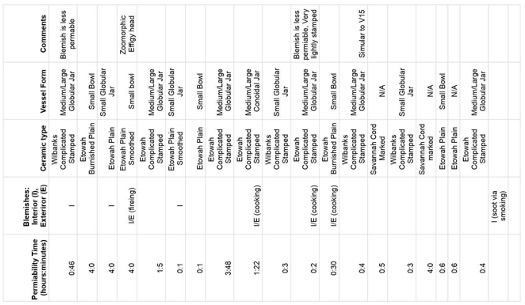


Appendix 2
Percentage of Sherds from Houses by Type
| Types | Etowah | Cummings | Long Swamp |
| Etowah Complicated Stamped | .40 | 14.89 | 14.10 |
| Wilbanks Complicated Stamped | 5 | 34.04 | .06 |
| Etowah Burnished Plain | 0 | 19.14 | 0 |
| Etowah Plain Smoothed | 0 | 19.14 | 0 |
| Etowah Plain | 0 | 8.51 | 0 |
| Etowah Incised | 0 | 0 | .13 |
| Etowah Polished Black | 0 | 0 | .75 |
| Etowah Red Filmed | .14 | 0 | 2.26 |
| Savannah Cord Marked | 0 | 4.25 | 0 |
| Grit Tempered Plain | 28 | 0 | 0 |
| Shell/Limestone Tempered Plain | 1.40 | 0 | 0 |
| Burnished Plain | 4.50 | 0 | 0 |
| Polished Black | .60 | 0 | 0 |
| Hiwassee Island Complicated Stamped | .40 | 0 | 0 |
| Corn-Cob Impressed | .29 | 0 | 0 |
| Unidentified Check Stamped | .14 | 0 | .03 |
| Unidentified Incised | .14 | 0 | .82 |
| Unidentified Stamped | 17 | 0 | 0 |
| Unidentified Complicated Stamped | 41 | 0 | 39.28 |
| Unidentified Surface Treatment | .14 | 0 | 0 |
| Unidentified Burnished | 0 | 0 | 10.29 |
| Unidentified Cord Marked | 0 | 0 | .03 |
| Unidentified Decorated | 0 | 0 | 12.83 |
| Unidentified Fabric Impressed | 0 | 0 | .24 |
| Unidentified Undecorated | 0 | 0 | 12.28 |
| Unidentified Scraped | 0 | 0 | .03 |
| Unidentified Simple Stamped | 0 | 0 | 2.12 |
| Eroded | 0 | 0 | 5.31 |
| Woodstock Complicated Stamped | 0 | 0 | .20 |
| Napier Complicated Stamped | 0 | 0 | .48 |
| Lamar Incised | 0 | 0 | .03 |
| Total Sherds | 694 | 47 | 2,914 |
Appendix 3
Percentage of Sherds from Houses by Temper
| Temper | Etowah | Cummings | Long Swamp |
| Grit/Sand | 97 | 100 | 95.27 |
| Limestone | 1.30 | 0 | 4.73 |
| Shell | 1.70 | 0 | 0 |
| Total Sherds | 694 | 47 | 2,914 |
Appendix 4
Cummings Vessel Usage
| Cooking/Food Preparation | Serving | Dry Storage | Liquid Storage | Ritual | Unidentified |
| V1, V3, V7, V9, V11, V12 | V3, V9, V12, V17 | V5, V6, V10, V13, V19 | Artifact #40, V8 | Artifact #5, V2, V4 | V14, V15, V16, V18 |
